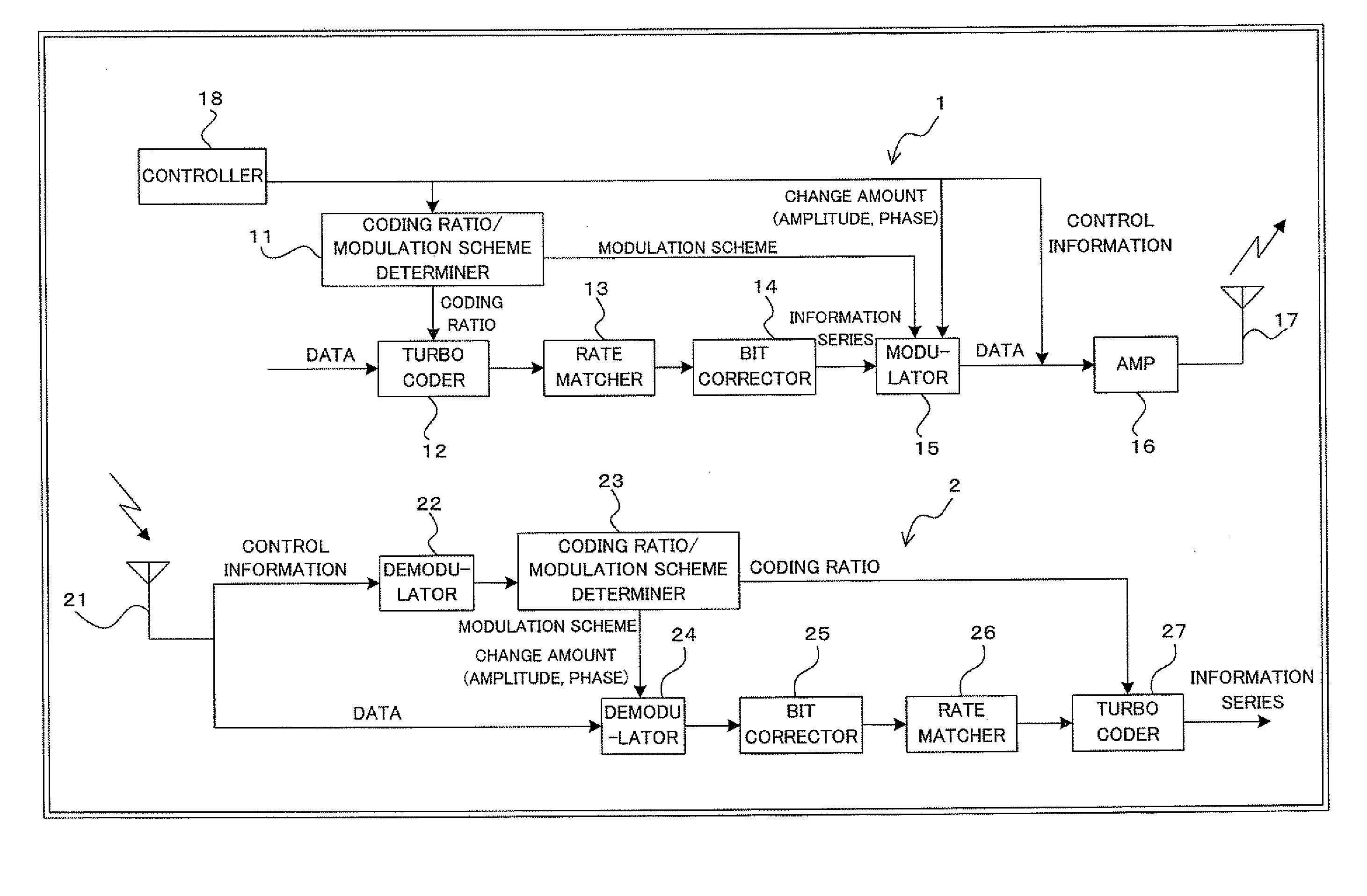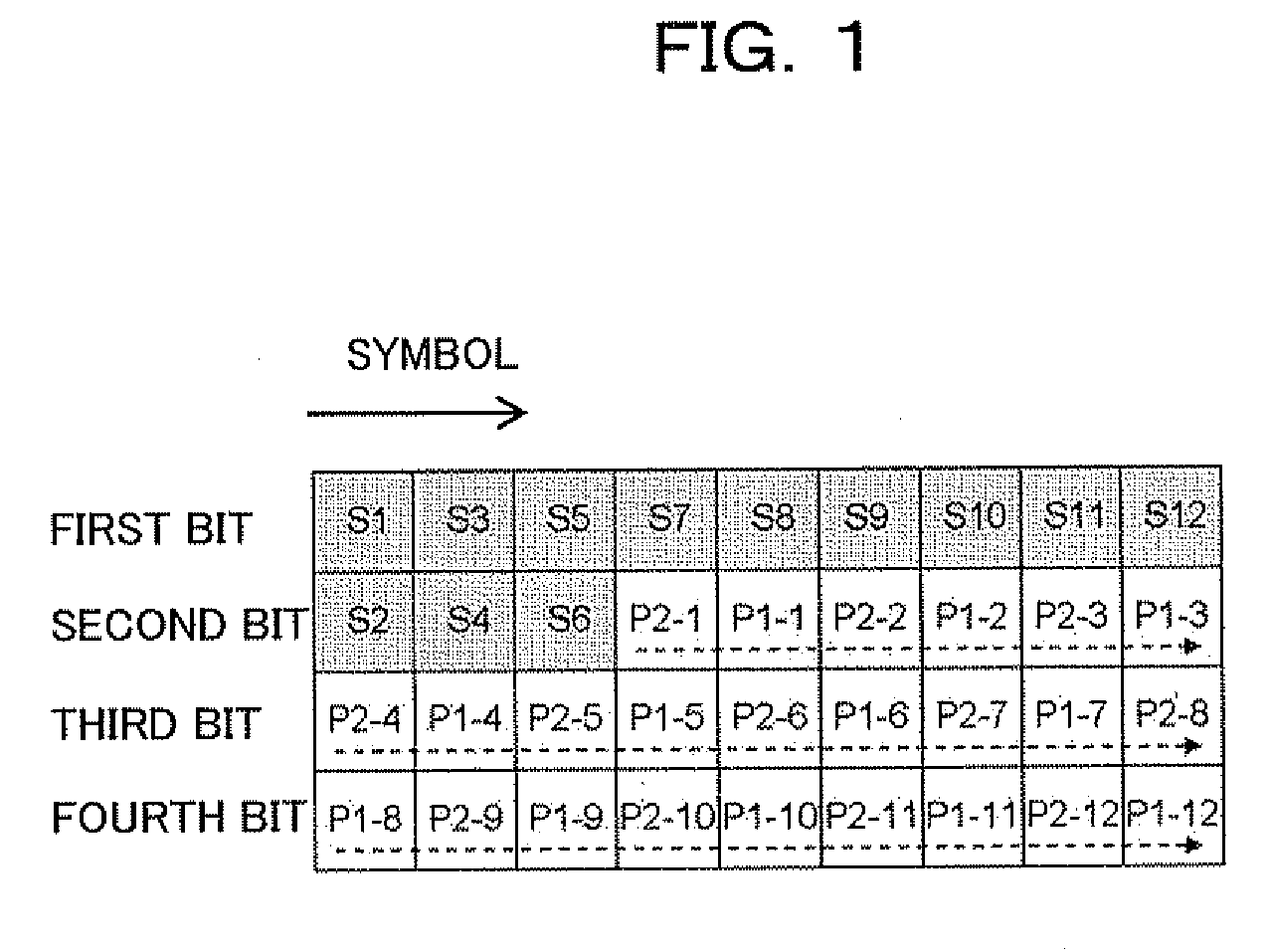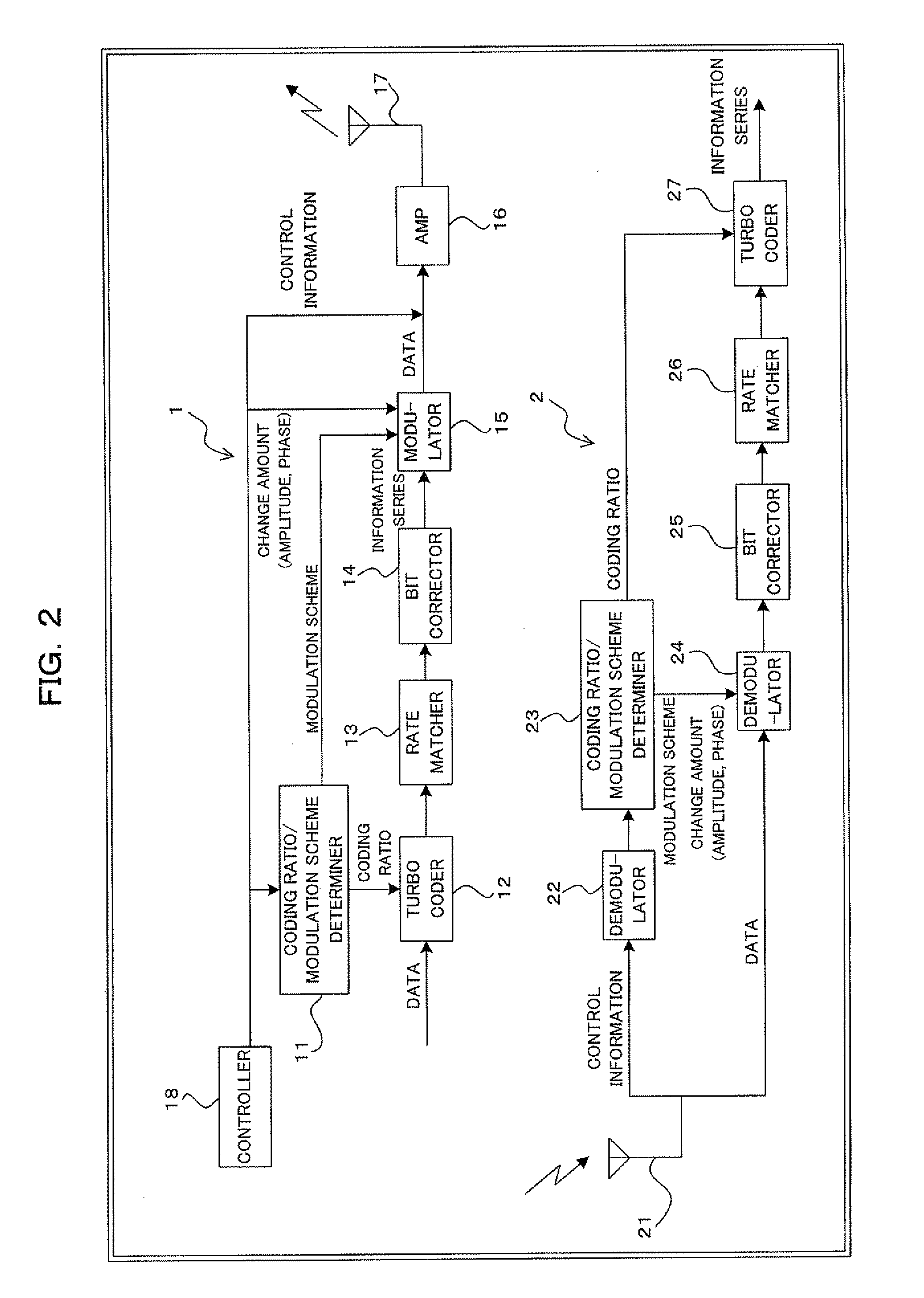Digital radio communications method using multi-level modulation scheme and transmitter and receiver
a multi-level modulation and digital radio technology, applied in the field of digital radio communications system, can solve the problems that such signal point arrangement at equal intervals is not necessarily optimal in terms of error rate, and bit correction processing cannot be said to be necessarily optimal, so as to improve the error rate improve the error rate, and improve the effect of multi-level modulation schem
- Summary
- Abstract
- Description
- Claims
- Application Information
AI Technical Summary
Benefits of technology
Problems solved by technology
Method used
Image
Examples
first embodiment
[2] First Embodiment
[0149]FIG. 2 is a block diagram illustrating a construction of a digital radio communication system using turbo coding and bit correction according to a first embodiment of the present invention. The digital radio communications system of FIG. 2 includes a transmitter 1 and a receiver 2. The transmitter 1 is applicable, for example, to a radio base transceiving station (BTS); the receiver 2 is applicable, for example, to a mobile station (MS).
[0150]Then, with attention paid to important parts thereof, the transmitter 1 includes, for example: a coding ratio / modulation scheme determiner 11; a turbo coder 12; a rate matcher 13; a bit corrector 14; a modulator 15; an amplifier (AMP) 16; a transmitter antenna 17; and a controller 18. The receiver 2 includes, for example: a receiver antenna 21; a demodulator 22; a coding ratio / modulation scheme determiner 23; a demodulator 24; a bit corrector 25; a rate matcher 26; and a turbo decoder 27. In this instance, the turbo co...
second embodiment
[3] Second Embodiment
[0256]FIG. 34 is a block diagram illustrating a construction of a digital radio communications system using turbo coding and bit correction according to a second embodiment. As in the case of the first embodiment, the digital radio communications system shown in FIG. 34 includes a transmitter 1 and a receiver 2. The transmitter 1 is applicable to, for example, a radio base transceiving station (BTS); the receiver 2 is applicable to, for example, a mobile station (MS). The second embodiment differs from the construction shown in FIG. 2 in that an amplitude / angle calculator 19 is added to the transmitter 1 and that the amplitude / angle calculator 28 is added to the receiver 2. In this instance, elements with reference characters the same as those already described are the same as or similar to the elements already described.
[0257]Here, as shown in FIG. 35, for example, the amplitude / angle calculator (symbol control amount calculating unit) 19 of the transmitter 1 s...
PUM
 Login to View More
Login to View More Abstract
Description
Claims
Application Information
 Login to View More
Login to View More - R&D
- Intellectual Property
- Life Sciences
- Materials
- Tech Scout
- Unparalleled Data Quality
- Higher Quality Content
- 60% Fewer Hallucinations
Browse by: Latest US Patents, China's latest patents, Technical Efficacy Thesaurus, Application Domain, Technology Topic, Popular Technical Reports.
© 2025 PatSnap. All rights reserved.Legal|Privacy policy|Modern Slavery Act Transparency Statement|Sitemap|About US| Contact US: help@patsnap.com



